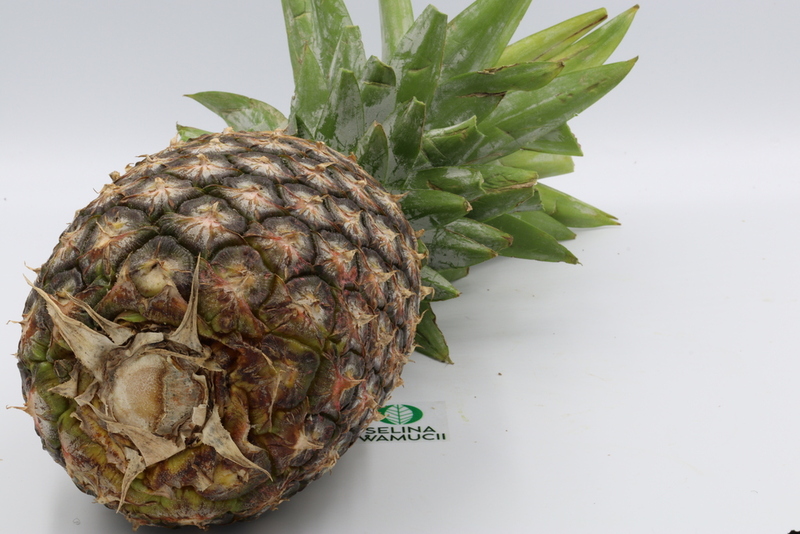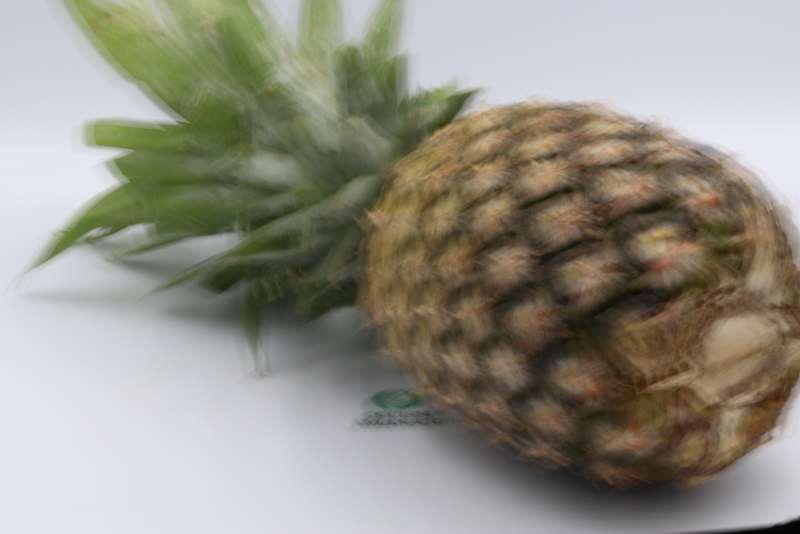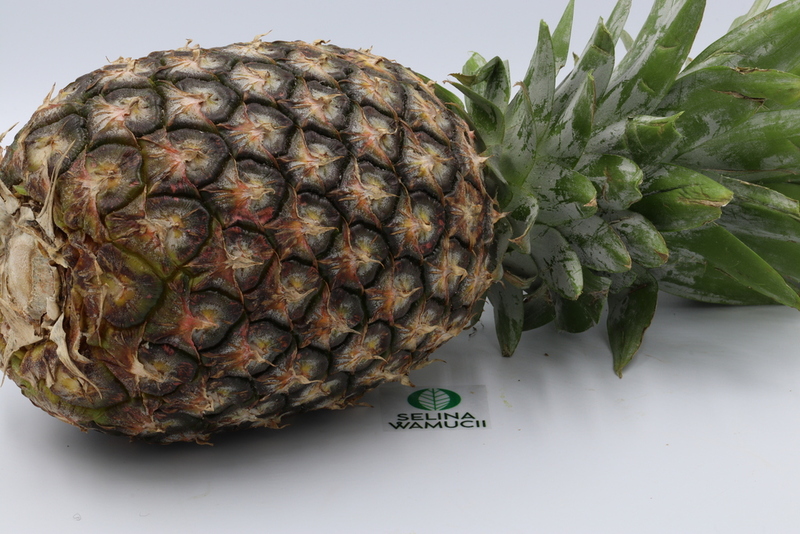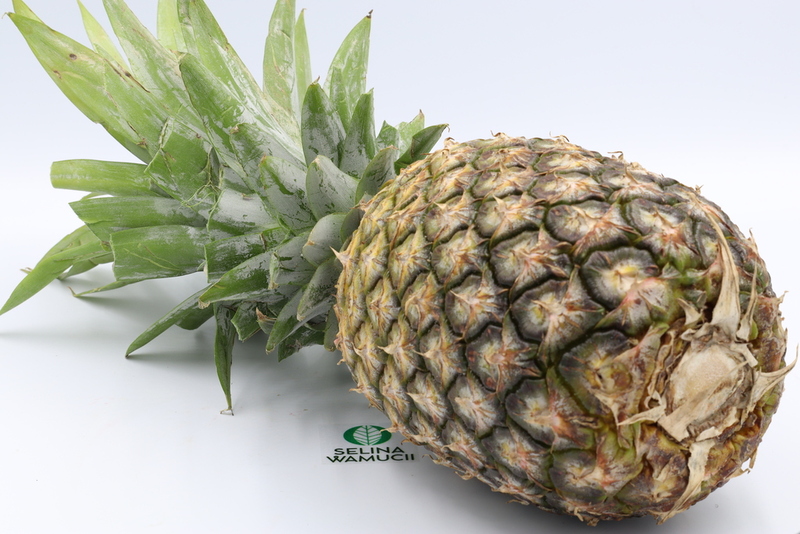Buy Uganda Pineapples Directly From Exporters & Suppliers - Best of 2024 Market Prices
| Summary | |
|---|---|
| Produce | Uganda pineapples |
| Variety | Smooth Cayenne, MD2 |
| Size | 6,8,10,12 |
| Season | January, February, March, June, July, August |
| Packing specification | Cartons, crates |
| Storage conditions | 7degrees to 12 degrees |
| Transport conditions | Well ventilated spaces, no moisture, controlled temperatures |
We provide high-quality Uganda pineapples to the local and export market. We source our Uganda pineapples from family growers in the country.
Uganda pineapples are of different varieties that include smooth Cayenne and MD2. Because of the prominence of the huge smooth Cayenne in comparison with the sweeter MD2 cultivar, the country competes well in the international market. Unlike MD2, whose popularity in Europe leads to oversupply by most other producing countries like Thailand, Oman and China, cayenne is less grown and thus competitive. Locals call the fruits enanansi, which is etymologically similar to the Swahili word, nanasi.
The origin of the fruit was the Brazilian south, as well as Paraguay. The pineapple then spread to Latin America, where it enjoyed cultivation by the Azec Mayas prior to the fruit’s discovery by Columbus in the year 1493. The fruits may have reached Uganda through an introduction by European explorers during the pre-colonial times.
Pineapples have a high volume of vitamin C, at 79 percent of the daily value. This is followed by the level of vitamin B-6 at 5 percent of the daily value, while that of magnesium is 3 percent of the daily needs. The dietary fiber amount is 5 percent from each slice, for the enhancement of digestion. This potent combination of nutrients keeps the weight down, prevents colds, maintains a strong bone structure, and improves immunity.
We source Uganda pineapples from the southern parts such as Luuwero as well as in the West of the country. We also have family growers with small plantations in the centrally positioned Kayunga district. We ensure that we contract farmers with a rich tradition of organic farming to keep the produce acceptable internationally.
There are two harvesting seasons in Uganda, one runs from January to March while the other begins in June through August. The harvesting of pineapples requires fruits that are relatively solid at 12°Brix. This means that the berry has attained a firm, semi-solid pulp that is acceptable in the fruit market. One indicator which our pickers look for includes the production of a solid reverberation upon tapping. Another indicator is when the first or second eye or both have changed their hues. A third indicator is the 127th day since flower formation, upon which the berry will have gotten brownish-yellow in color for a quarter of its total extent.
We harvest pineapples by cutting them at the base with long, tapered knives. The pickers leave three to five-centimeter long penuchles attached to the fruits. We then put the harvests into clean bags ready to cart off. Any fruits that do not reach quality parameters such as immaturity or are diseased are not put into the cart. Upon reaching the packinghouse, we sort the fruits into grades based on size and healthy appearance.
The size considerations we take for grading Uganda pineapples include the following: fruits in the weight range of 2750 grams with a crown and 2280 grams without a crown go into Size A. This constitutes most of the fruits in Extra Class. Size B consists of pieces weighing 2300 grams with crowns and 1910 grams without crowns. The third size is C between 1900 and 1580 grams in size.
We then sort the fruits according to appearance. The best, which are consistent in a pear shape, are large-sized and have no blemish, form the Extra class. Those fruits that neither meets the standards of this class nor are better than the last grade form our Class I grade. They are also healthy, medium-sized and blemish-free. The third category consists of healthy fruits with no sign of disease or rot, but due to lack of uniform size or shape fall under Class II grade. All fruits with field injuries or discoloration go into the value addition department for juice production.
We pack the pineapples in cartons and bulk. We can retain or sever the crown from each pineapple that we sell. For those with crowns, the latter represents at least 50 percent of the fruits’ height. We pack them in bulk in clean, well-ventilated containers. These containers conform to the CAC/RCP 44-1995 code of packing fresh fruits. The labeling of the packages is in conformance with the worldwide Codex for the transportation of food items. Therefore we indicate origin (country), the total weight and shelf life.
We store Uganda pineapples in our cold rooms at the relative temperature range of 7 to 10° Celsius. Combined with high relative humidity, this preserves the fruits for at least three weeks and keeps the flavor unchanged.
We transport the fruits in large trucks under controlled temperatures of average 10° C to keep them fresh. Currently, Uganda relies on airborne means to convey its shipments and so we transport our packed fruits to Entebbe.
In short, you do not have to look far for some of the best-flavored fruits in East Africa, namely Uganda pineapples. We source the fruits from small plantations that maintain natural methods of growth, with little spray use and maximum use of farm compost. You can request for multiple tons of the fruits, which due to their irrigated nature, are available in plenty throughout the year. We cater to our customers by offering some of the lowest purchasing rates in the region. Sign up to our platform to make an order today!
Get Instant Quote
Are you a producer of Uganda Pineapples or other products?
Sign up today for FREE to buy or sell Uganda Pineapples.





